Want to join in? Respond to our weekly writing prompts, open to everyone.
from Faucet Repair
7 December 2025
In the living room at my parents' place in the sky (18th floor) in Marina del Rey, glass white clouds bright gray, sheer heather curtain, blue glass angled refraction, purple glass shaker aluminum wood L's grain polished scratches, cream angles gray velvet, metal riveted orange glow floating frame, faces fragmented matte nylon mounted cool jeweled memory frames, glasses coffee table brushed aluminum olive textile carpet jeans draped, woven tufted selvedge denim shadow thrown cross warped window drop water bubble gland, wrist hand rested cream alarm vented black white gray wax orchid iron suspension checker, twist ring ninety pounds ink 05 08 seated circles, orange gold round arched fitted pressed braided capped, arranged melded signed signature, folded drying clicking, distant satellite smog crawlers breeze through street plane blue light blue sky blue mirrored bird mirror metallic love pretty pink speaker.
from Lastige Gevallen in de Rede
De man die de tijd vergat
U bent op mijn weblog terechtgekomen omdat u een gat wil graven en niet weet hoe dat moet. Ik ken dat, zo wou ik ook een gat graven en wist het niet. Online kon ik geen informatie vinden, tips over gereedschap, tijdslimieten, diepte, kwaliteit, motivatie en deugdzaamheid. Dagen werden weken maar niemand zei, liet me lezen, deed voor hoe ik gaten moet graven, niet waar noch wanneer. Uiteindelijk heb ik het allemaal zelf moeten doen. U beste lezer van Van Voorbijgaande Aards klus stukje wil ik deze ellende besparen. Het tijdverlies, de vertwijfeling, dat voortdurende onzekere gevoel oog in oog met de grond of iets anders dicht en vast zonder.
Ik wil u alleen overal mee helpen, daarom doe ik dit allemaal voor u en u behoefte aan grote en kleine gaten voor in de solide ontoegeeflijke aarde of een wand. Prijs mij maar, maar niet te hoog of duur, gewoon af.
Gaten, een gat, wat is het? Neen, wat is het niet? Dat is de correcte vraag. Het is wat u weg haalt of voor u is verwijderd, in ons geval willen we dit zelf doen. Alles is nog daar. Het ligt daar niet te vermurven. Niet vanzins te wijken voor u zin aan een plek waar dat niet meer is.
U wil ook een gat. Mijn eerste advies voor u. Zoek een plek voor dat gat, niet elke plek is klaar om gat te worden. Het is aan u en u paar ogen, gezonde verstand om te bepalen wat de beste plek is voor het eerste daarom meestal het beste gat ooit. Het gevolg van dit eerste advies is dat ik u moet wijzen op voor gaten vriendelijke omstandigheden, iedere plek is niet voor niks geschikt. Is het gat voor een ander dan is het handig om het daar te graven waar deze is en er gerede kans dat hij of zij er daadwerkelijk in gaat. Doet u dat niet vallen er 100% zeker een aantal wild vreemden in, misschien als het te dicht bij u zelf is iemand die u kent zoals u zelve.
Is het gat precies daar voor dan is dit juist een goed plan. Kortom waar. Waar! Dit is erg moeilijk, hier had ik het meeste moeite mee. Ik heb daarom na lang wikken en wegen besloten om gebruik te maken van mijn intuïtie. Deze was wat roestig omdat ik er zo weinig mee deed en sinds het gat is niks mee doe, leven zonder is ook best te doen. Het ligt daarom weer op zolder bij de vergeten hobbies en onleesbare tekens voor aan de wand. Echter voor een echt goed gat is deze materie onontbeerlijk.
Ik inhaleerde het spul der intuïtie ging staan en keek toe met exact afgestelde ogen turen naar alles en op zich kan in alles wat er is een gat. Nu zag ik echter in dat ik maar één of twee gaten wou en wel in de tuin en een andere in de muur van buiten voor een deur naar binnen. Ik leefde al een poos rondom mijn huis maar kon er niet in en dat zat me dwars zo zag ik nu, een tuin is voor gaten maken sowieso de perfecte locatie.
Nu had ik twee plekken en dan komt dus het volgende probleem hoe maak je opzettelijk niks van iets. Welke middelen heb je daar voor nodig, hoe lang moet je met dat spul werken voor het andere spul afwezig is. Ik had er wel wat over gelezen in de Wetenschap International maar deze gegevens kon ik niet gebruiken op het aan mij gegevene, beide dingen bespraken andere leegtes op een andere manier en in een andere tijd gemaakt. De wetenschap International schoot alweer te kort.
Ik stond met mijn handen in het haar voor het potdichte. Dit moest ik ook al alleen doen, geen hulp van niks, niemand, tijdschriften, kranten archief, de bibliotheek noch het instituut voor gaten op de wereld, zelfs de markt kon me niet helpen, bleek dat ze daar maar een gat hebben en deze telkens weer opnieuw gebruiken. Ik liep naar de plekken waar de gaten moesten ontstaan en riep “Hoe?” De kern van ieder probleem.
Ik ging bidden, hulp vragen bij elke bekend opperwezen mij bekend, op de bij deze goden verplichte manieren maar het bleef stil, geen info. van boven was beschikbaar, of de goden waren samen op weg naar een symposium voor onzichtbare zeer dwingende bewindvoerders over methodieken en op volgelingen toepasbare technieken betreffende overheersing. Niet te porren voor twee gaten meer, ze maken ze liever zelf en in één keer duizendvoudig. Ik stond tegenover de materie, lijnrecht er tegenover, zij vast van plan zo te blijven versus ik vast van plan daar iets tegen te doen.
Ik douwde mijn vinger tegen de buitenmuur, de vinger boog, de muur week niet, De aarde was een stuk minder standvastig en daarom besloot ik daar te beginnen aan gat 1. De aarde wist van wijken, ik had alleen verwacht dat het ook echt zou verdwijnen maar eenmaal een gaatje werd de rest een hoopje. Een stapel op de rest van de stapel. Dat kon wel eens lastig worden. Een gat wordt een hoop. Vandaar dat die goden juist daar zoveel woorden aan vuil maken. Ze halen weg en dit komt op die plek. Dit was niet mijn bedoeling maar het is en blijft een vast gegeven waarmee ik rekening moet houden en u dus ook, het gat en de hoop waren rechtevenredig maar het gat moest er wel komen, ik had het zelf bedacht, net als u.
Dus ik gedoogde de hoop, daar vond ik later wel een plek voor. Ik wist toen nog niet hoe diep dat gat ging worden, hoe lang ik ging graven, eerst alleen met de blote hand later vond ik diverse instrumenten uit waarmee ik vlotter kon graven, deze instrumentjes kunt u na afloop van dit stukje kopen bij de merchandise afdeling van writeas, het zijn spatels, lepels en scheppers gemaakt van restmateriaal. Het gat werd uiteindelijk drie keer zo groot als mijn tuin, de hoop dus ook. U kunt de restanten ervan ook al aanvragen bij dezelfde store. Het is vooral handig voor het vullen van gaten.
De helft van de hoop heb ik uiteindelijk gebruikt voor het maken van een dijk om mijn vers geschepte grote gat, een afzetting tegen ongewenste blikken op mijn creatie. Een wal tegen de vijandelijke wereld uit op verovering van mijn diepe gat, of hen die het willen vullen met hun resthoop.
Dat was dan dat. De muur was nog altijd dicht, mijn huis kon ik nog niet in. Dat zag ik zo. Ik ging op zoek naar mijn opgedolven restmateriaal, uit de hoop gevist. Door alles wat ik had uit te proberen op de wand ontdekte ik twee bruikbare stukjes waarmee ik andere stukjes uit de muur kon breken en er door de voortdurende herhaling een kruipgat ontstond en dus ook een hoop rommel. Na weken hannesen werd de opening zo groot dat ik er recht op door kon lopen. Ik was intens tevreden over het bereikte niks. Het enorme gat en de doorgang van binnen naar buiten en vieze versje. Meer dan dit kon ik niet behalen binnen de mij beschikbare periode, alles wat ik nodig had lag voor me, iedere dag zag ik in mijn afgrond, stond ik in de ruwe onafgewerkte opening tussen buiten en binnen te turen over die leegte en naar de dijk die het beschermd. Ik stak dan mijn duim op naar de goden nog altijd elders verkerend en zei 'zo nu ben ik één van jullie'. Zouden ze komen met uitnodigingen voor hun vele uitjes, aanbiedingen en redevoeringen en dan houdt mijn dijk ze hopelijk tegen. Mijn gat is door hun afwezigheid tijdens de creatie goddeloos, het is eentje waar ik niet over wil heersen, die ik niet wil controleren maar gewoon vanuit mijn positie wil zien hoe het zichzelf zonder hulp weer met nieuwe materie vult.
Ik help u alleen door er op te wijzen dat het mogelijk is om een gat te maken, enkel door te willen en met het stellen van vragen en deze zelf te beantwoorden. Eventueel met een beetje bijstand waarmee u het nodige gereedschap bij de writeas store kunt aanschaffen of een stukje van mijn hoop om ongewilde gaten te dichten, meer kan ik namelijk niet voor u doen.
Met vriendelijke groet ...
from Faucet Repair
5 December 2025
“...go to a place (be invited for instance) have impressions there take things from the places where you have impressions (take really or mentally) bulbs from lamps, candy from stores, symbols from visions in dreams, symbols from visions in places, colors from clothes, colors from faces, colors from memory, colors from hope, colors from disgust make (as many as time allows, invitation allows, health allows, walls want, you want, people want) flat things (pictures) out of the taken things copy them photographically, make portraits of them, describe them, make remarks about them, divide them, alter them, keep them, give them have machines doing the same for you, more for you, more for somebody else, more for themselves make pictures out of things, feelings, visions, remarks, accidents which come from those pictures make (at any time) a pile from the pictures you like, somebody likes, certain people like, nobody likes and bind them as a book...”
—Dieter Roth (from Offhand Design, 1975)
from Prov
Spiritual 2026
I made the conscious decision to completely dive into the spiritual. I aim to make it the epicenter where everything flows from.
There are books I am interested in reading such as Laura Lynn Jacksons “The Light Between Us”, “Signs”, and “Guided.”
I have an interest in Astral Projection. My scientific mind is curious and wants to see for myself what is true and what is now.
I am aiming to connect more with my spiritual guides on the other side. Being intentional and really tackling the lesson I came to learn in this lifetime. As far as manifesting, I am working towards going back to school for my doctorate. Funding and other monies will be required. I will be locking in and aligning with all things to make this process work in my favor.
I've been back in the gym lately and working towards rebuilding my physical strength an health as well as get this body back to something.
I still honor my truth. I simply just want to do my mission and pack it up. I love my family and friends but the wheelchair quadriplegia life is and was ever me. I have been blessed with so many things in this life and I have gratitude. But my life..my real purpose.. was stolen from me. I own those emotions and realities. But that will not stop me from trying to make something out of this.
I will ever get or see justice. That won't stop this show.
Overall, I am just GOING. I don't know where or what. I just am...and that is ok.
from Prov
The High Road
I recall a moment at work when I received an email that contained valid but critical feedback delivered in a tone that could easily be misread over text. I felt my own triggers immediately try to take the front seat.
I know myself well. What I do not care for is being critiqued by people who also make mistakes especially when I have seen that they do. I put real effort into what I do and that matters to me.
Still I chose to take the higher more spiritual road. I paused and asked myself a few questions.
Is this coming from a malicious place Or is it shaped by their own past experiences or internal triggers
Is the feedback itself valid
What good would come from responding by pointing out their mistakes
I decided to take it as an opportunity to practice patience understanding and love. I thanked them for the feedback and moved forward.
I reached the conclusion that their feelings carry no weight when it comes to my true abilities. They were simply expressing a concern from their own perspective. In general they are not a bad person and we have a decent working relationship. Even if there were underlying negative feelings that is ultimately their work to do and likely rooted in challenges they faced long before this moment.
I am intentionally stepping into a space where I stop identifying with and reacting to negativity. Instead I acknowledge it as part of a greater whole accept it and consciously shift the energy into something productive. My goal is to respond to others the way God responds to me with steadiness compassion and grace whether the moment is charged with anger joy or sadness.
Syntax Highlighting for Code Blocks
from  dimiro1's notes
dimiro1's notes
This is part 4 of a series on building a terminal agent from scratch.
Previous parts: – Part 1: Building an Agent from Scratch – Part 2: The Conversation Loop – Part 3: Rendering Markdown in the Terminal
The complete source code is available on GitHub: https://github.com/dimiro1/agent-from-scratch/tree/main/04
In this part, we'll add syntax highlighting for code blocks. When LLMs return code snippets, they use markdown code blocks with a language hint like clojure or python. We'll parse these blocks and apply colors to keywords, strings, comments, and numbers.
Let's get started.
The Approach
Our syntax highlighting strategy is simple:
- Extract code blocks from the markdown (the part between triple backticks)
- Identify the language from the code fence (e.g., ```clojure)
- Apply regex-based highlighting for that language
- Return the colorized code
We're using regex for highlighting because it's straightforward and keeps our implementation simple. Production syntax highlighters use proper parsers, but regex works well enough for our purposes.
Creating the Code Namespace
Create src/termagent/code.clj:
(ns termagent.code
(:require [clojure.string :as str]
[termagent.ansi :as ansi]))
We'll build individual highlighters for each language, then combine them with a dispatcher function.
Highlighting Clojure
Let's start with Clojure since that's what we're writing:
(defn highlight-clojure [code]
(-> code
;; Strings (must come before keywords to avoid conflicts)
(str/replace #"\".*?\"" ; (1)
(fn [match]
(ansi/render [:green match])))
;; Comments
(str/replace #"(?m);.*$" ; (2)
(fn [match]
(ansi/render [:dim match])))
;; Keywords (Clojure :keyword syntax)
(str/replace #":[a-zA-Z][a-zA-Z0-9\-]*" ; (3)
(fn [match]
(ansi/render [:magenta match])))
;; Numbers
(str/replace #"\b\d+\.?\d*\b" ; (4)
(fn [match]
(ansi/render [:yellow match])))
;; Common functions
(str/replace #"\b(println|print|str|map|reduce|filter|conj|assoc|dissoc|get|first|rest|count|into|vec|list|seq|apply|partial|comp)\b" ; (5)
(fn [[match]]
(ansi/render [:blue match])))
;; Language keywords
(str/replace #"\b(def|defn|defn-|defmacro|let|if|when|cond|fn|loop|recur|do|for|doseq|require|ns|use)\b" ; (6)
(fn [[match]]
(ansi/render [:blue match])))))
Let's break down the patterns:
- Strings are matched with
\".*?\". The?makes it non-greedy, so it stops at the first closing quote - Comments use
(?m);.*$. The(?m)enables multiline mode so$matches end of each line - Keywords match the Clojure
:keywordsyntax - Numbers match integers and decimals with
\bword boundaries - Common core functions get highlighted in blue
- Special forms like
def,defn,letalso get blue
The order matters! We process strings first because they might contain characters that look like keywords or comments.
Adding More Languages
The pattern for adding new languages is the same: match strings first, then comments, then language-specific elements like keywords and numbers. The repository includes highlighters for Python, JavaScript, Java, Elixir, Lua, and Ruby. Each follows the same structure with language-specific regex patterns.
The Dispatcher Function
Now we need a function that picks the right highlighter based on the language:
(defn highlight
"Applies syntax highlighting to code based on the language"
[code language]
(case (str/lower-case (str/trim language))
"clojure" (highlight-clojure code)
"clj" (highlight-clojure code)
"python" (highlight-python code)
"py" (highlight-python code)
"javascript" (highlight-javascript code)
"js" (highlight-javascript code)
"java" (highlight-java code)
"elixir" (highlight-elixir code)
"ex" (highlight-elixir code)
"lua" (highlight-lua code)
"ruby" (highlight-ruby code)
"rb" (highlight-ruby code)
(ansi/render [:dim code]))) ; (1)
- For unknown languages, we render the code in dim (the ANSI code that makes text appear faded). This provides a visual distinction from regular text without breaking anything
Integrating with Markdown
Now we need to update our markdown renderer to handle code blocks. Update src/termagent/markdown.clj:
(ns termagent.markdown
(:require [clojure.string :as str]
[termagent.ansi :as ansi]
[termagent.code :as code])) ; (1)
- Add the new code namespace
Add the code block renderer:
(defn render-code-blocks [text]
(str/replace text
#"(?s)```(\w+)?\n(.*?)```" ; (1)
(fn [[_ language code-content]] ; (2)
(let [lang (or language "") ; (3)
highlighted (code/highlight code-content lang) ; (4)
lines (str/split-lines highlighted)
indented (map #(str " " %) lines)] ; (5)
(str "\n" (str/join "\n" indented) "\n")))))
- The regex matches fenced code blocks.
(?s)enables dotall mode so.matches newlines. We capture the optional language identifier and the code content - We destructure the match to get the language and code separately
- If no language is specified, we default to an empty string
- Apply syntax highlighting
- Indent each line with two spaces for visual separation
Update the render function to process code blocks first:
(defn render [text]
(-> text
render-code-blocks ; (1)
render-horizontal-rules
render-headers
render-blockquotes
render-tasks
render-lists
render-images
render-links
render-bold
render-strikethrough
render-italic
render-inline-code))
- Process code blocks first, before any other transformations. This prevents inline code rendering from interfering with code blocks
Testing the Highlighter
Let's test the Clojure highlighter:
$ clj -M -e "(require '[termagent.code :as code]) (println (code/highlight \"(defn greet [name] (println \\\"Hello\\\" name))\" \"clojure\"))"
You should see colorized output with: – Green strings – Dim comments – Blue keywords – Yellow numbers – Magenta Clojure keywords
Testing with the Agent
Now let's see it in action with our agent:
$ clj -M:run
User: Write a hello world function in Clojure
Assistant:
Here's a simple hello world function in Clojure:
(defn hello-world []
(println "Hello, World!"))
(hello-world)
This defines a function called `hello-world` that prints "Hello, World!" to the console.
The code block is now syntax highlighted with colors!
What We've Built
You now have: – A syntax highlighting system using regex patterns – Support for multiple languages (Clojure, Python, JavaScript, Java, Elixir, Lua, Ruby) – A dispatcher that selects the right highlighter based on language – Code block rendering integrated with markdown
To add more languages, create a highlight-<language> function following the same pattern and register it in the highlight dispatcher.
What's Next
Our terminal agent now renders markdown beautifully with syntax-highlighted code blocks. In the next part, we'll clean up the implementation and improve the user experience. After that, we'll add tool support so the agent can execute actions like reading files and running commands.
Hope to see you there!
Kulturell fracking
from eivindtraedal
“Kulturell fracking” er et godt nytt begrep som fløy forbi i en podcast jeg hørte på her om dagen. Fracking går ut på at grunnfjell blir gjennomhullet og sprengt opp med borevæske under høyt trykk så det sprekker opp, og man kan skvise ut mer gass og olje. I mediebransjen bores og sprenges det stadig i det kulturelle grunnfjellet etter de siste dråpene. Særlig hos de store filmstudioene.
Kinoene har i årevis vært fylt med endeløse “sequels”, “remakes” og nye vinklinger på gamle historier. Eier man først en lukrativ intellektuell merkevare, må man utnytte den til fulle. De store pengene kastes etter de fortellingene som allerede har slått an. Slik ble filmatiseringen av “Hobbiten”, en bok på ca 300 sider, nesten like lang som filmatiseringen av “Ringenes herre”, på ca 1100. For ikke å snakke om den endeløse rekken av Marvel- og DC-filmer, eller de mange og stadig kjedeligere filmene fra J.K. Rowlings univers. Hver historie må spres tynt ut, som smør spredt over for mye brød, for å sitere Bilbo Lommelun.
Nostalgi er blant de sikreste salgsvarene, dermed blir karakterer og fortellinger konstant resirkulert. På listen over årets ti mest populære amerikanske filmer finner vi én original film: Sinners. En fantastisk film, sm riktignok også er en ny vri på en gammel historie. Ellers finner vi en filmatisering av spillet Minecraft, en ny versjon av Lilo & Stitch, vi finner nye virer på historien om Superman og Jurassic Park, en film basert på “Trollmannen fra Oz”, oppfølger-filmen Zootopia 2, og to Marvel-filmer. Og dag ble jeg gjort oppmerksom på at det har blitt laga en TV-serie om Miss Sophies liv! Du vet, hun fra “Grevinnen og hovmesteren”. Selvfølgelig må vi skvise mer ut av den historien også.
Denne evige resirkuleringen skyldes ikke først og fremst latskap eller manglende fantasi hos kulturarbeidere, men profittjag og risikoaversjon hos eiere. Særlig i Hollywood. Det føles lenger og lenger mellom de virkelig nye og spennende historiene og idéene. Eller bare nye filmer med sine egne karakterer og universer som kan få stå på egne bein, uten å umiddelbart bygges ut til et franchise.
Vil denne kulturelle frackingen bidra til forgiftet drikkevann, et ødelagt grunnfjell, kulturelle jordskjelv eller kulturell forurensing? Vel, la oss ikke dra metaforen for langt. Men det føles uunngåelig som om vi får en fattigere og kjedeligere kultur når man hele tiden skviser de gamle sitronene i stedet for å produsere nye. Jeg tillater meg å være mot fracking også på dette området.
Anyway, nå skal jeg kose meg med en serie basert på Star Wars. God romjul!
Irish families
from  Reflections
Reflections
Irish families like mine have two responsibilities:
- Pretend everything is fine when everything is terrible.
- Pretend everything is terrible when everything is fine.
#Life
joyeux, ou calme.
from  laska
laska
De l’extérieur, ça paraît triste. Froid et gris. Et moi-même, en voyant des couples âgés au cinéma à midi, je me suis demandé si c’était triste ou pas.
Et pourtant, c’est le Noël le plus apaisé depuis… Depuis quand ? J’ai eu mon lot de stress logistiques, de “il faut”, de contraintes de boulot. “Fêter” Noël à l’hôpital, c’est pas de la tarte.
(Passer le nouvel An aux urgences mais pas dans le cadre du travail, non plus, mais c’est une autre histoire)
J’ai fêté avec des pâtes pimentées, j’ai pris mon courage à deux mains pour aller au cinéma. Deux heures assise à me concentrer, et sans pouvoir m’allonger. J’appréhendais.
Et ce documentaire animalier fut un régal pour les yeux autant que pour les oreilles.
Découvrir les cernes rouges du grand tétras, ces plumes ébouriffées et cette posture majestueuse. Son chant si étrange et sa marche lente sur la glace.
Certes, il est magnifique, et j’ai beau avoir vu sur chaque office du tourisme de montagne petite, que les tétras composaient la faune du parc régional, je n’en ai jamais vu. Et y en a-t-il seulement encore. D’ailleurs, dans les Vosges, dans ce film, il n’y en a plus.
Mais une fois le tétras admiré, j’ai eu envie de pleurer. Cette silhouette d’écureuil, le groin d’un blaireau ou cette tête de vache, pardon de cerf. Les petites têtes de chouettes, et leur parfait camouflage avec le tronc de leur arbre.
Le regard fixe et rouge du hibou grand duc à la caméra. Le regard du fond de la nuit du lynx, en gros plan. “Je t’ai vu. C’est moi qui t’ai trouvé”.
Les Vosges hors été, des forêts humides, noires et hostiles. Un régal pour le cinéaste, qui passe la moitié du film à contempler la brume. On aperçoit des ombres, on voit flou les bestioles. Il est rappelé qu’on entend plus qu’on ne les voit. Si Vincent Munier veut étendre son film avec un podcast, je suis preneuse.
La brume. À travers une toile d’araignée. Devant la neige. L’eau qui s’évapore d’un tronc. Le souffle du tétras. Un cerf essouflé qui fume de sueur.
Ce n’est pas un film comme on a l’habitude de voir.
Il est aussi question de transmission. “Papi ! Je suis coincé dans la neige”.
“Elle est si belle cette mésange avec sa crête. Un peu punk. C’est toi au saut du lit.”
En sortant, je suis passée au bord de l’eau. Un foulque plongeait, un goéland barbotait. Tout était gris, le ciel comme l’eau, même le saule pleureur. Et c’était quand même très beau.
Je suis revenue au chaud, et j’ai caressé les minettes endormies. 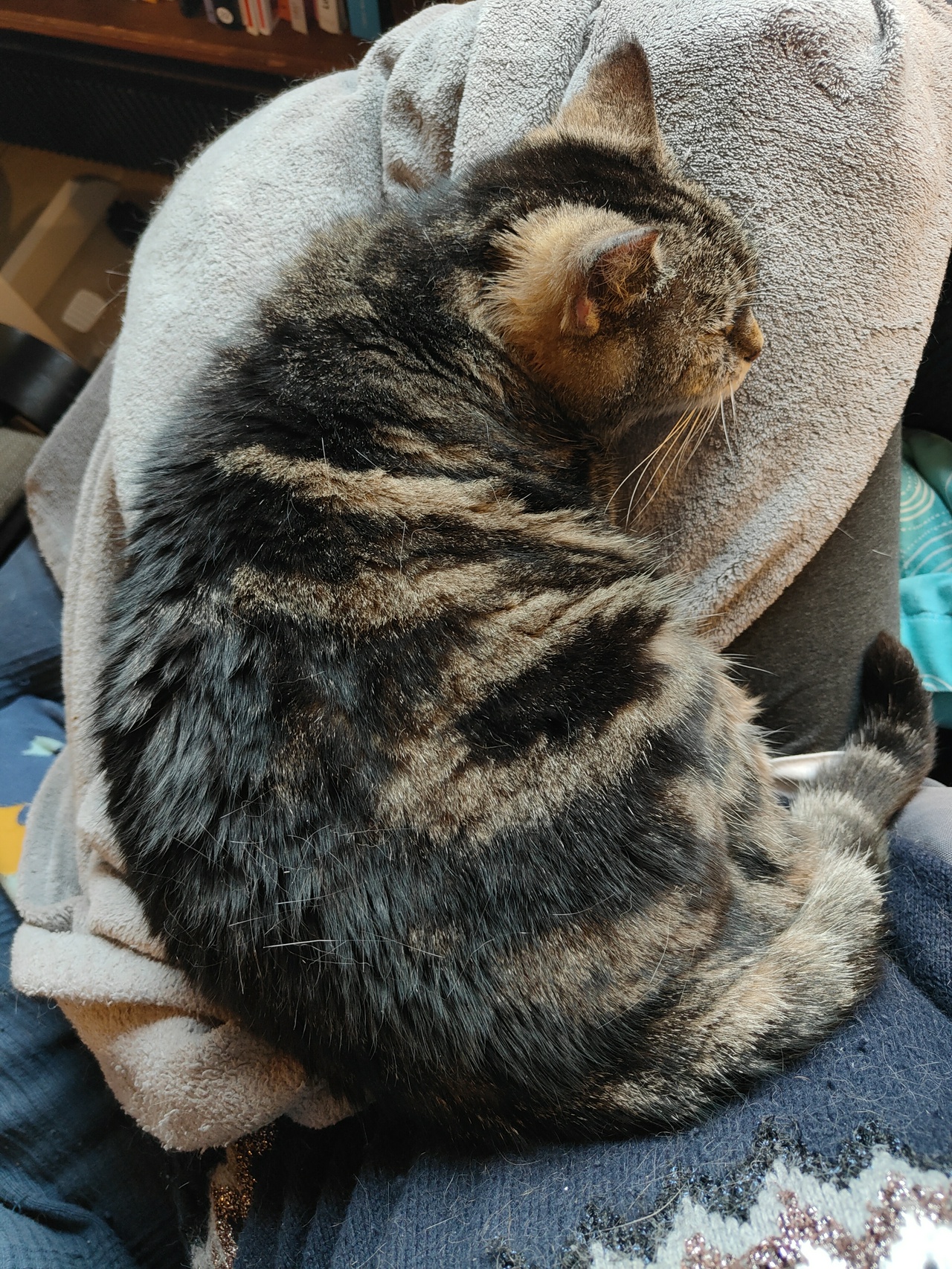
Merry Christmas Everyone!
Thank you Matt at Write.as and everyone who has read my posts. Enjoy spending time with family and friends. Merry Christmas and God Bless!
#merrychristmas
Therapiephase
Heute in der Therapie. Durchgeweint. Zum dritten Mal.
Du bist wie ein Fels. Ich bin die Brandung. Meine Gefühle sind wie riesige Wellen die gegen den Fels schlagen.
Warum umarmst du mich nicht? Warum gerade das nicht? Das, was ich mir am meisten wünsche? Das, wonach sich alles in mir verzehrt? Das, was in mir brennt wie ein Feuer?
Wir sind so nahe. Und doch darf ich dich nicht berühren.
Alle Wut. Alle Verzweiflung. Aller Schmerz wirft sich dir entgegen.
Entlädt sich an dir. Bezieht sich auf dich. Klagt dich an. Überschwemmt dich ungebremst und mit aller Wucht.
Aber du bist geduldig. Du hältst meine Gefühle aus. Du stehst alles mit mir durch. Und erklärst mir alles zum hundertsten Mal.
Dass es alte Gefühle sind. Dass ich das als Kind durchleben musste. Dass der Vater keine Nähe zuliess.
Dass die Verzweiflung in Wirklichkeit auf ihn gerichtet ist. Auf den Kindheitsvater.
Dass das Fehlen des Vaters ein Verlust ist. Ein besonders schwieriger Verlust. Ein besonders komplizierter Verlust. Der Verlust von etwas, das gar nie da war. Und deshalb auch schwer zu fassen.
Diffus. Nicht greifbar. Überdeckt von Schamgefühlen und Schutzmauern. Tief vergraben und lange unsichtbar. Undefinierbar.
Aber nicht weniger schmerzvoll als ein sichtbarer Verlust. Nicht weniger ernst. Nicht weniger wichtig. Nicht weniger echt.
Das sagst du mir heute nochmals.
Mein Weinen kommt in Wellen. Starke, grosse, wilde Wellen, die sich dir entgegenschleudern und sich an dir brechen.
Wieder. Und wieder. Und wieder.
Und indem sie sich an dir brechen, werden sie kleiner und sanfter.
Bis sie sich beruhigt haben und das Meer glatt und still daliegt. Friedlich. Ruhig.
Geborgen. Gehalten.
Irgendwann ist der Sturm vorbei.
Hoffe ich.
#Therapie
Inserting Unicode in Emacs
from  dimiro1's notes
dimiro1's notes
This was a very nice surprise; I've never seen anything like it in any other editor.
To insert a Unicode character, use C-x 8 RET. An interactive menu will appear where you can search for the character you want by name.
For example, the command:
C-x 8 RET BANKNOTE WITH EURO SIGN RET

...inserts the 💶 character into the buffer:
Mind blowing... 🤯🤯🤯
from  Kroeber
Kroeber
#002276 – 22 de Agosto de 2025
A ciência e a cultura influenciam-se mas quase nunca andam sincronizadas, nem sequer ao mesmo ritmo. Cientistas investigam o sétimo sentido dos seres humanos, o tacto remoto, mas continuamos a dizer cinco sentidos, ignorando o sexto, a propriocepção, ou então usamos a expressão sexto sentido de forma figurativa, para significar percepções fora da realidade fisiológica.
Lay Awake
from  wystswolf
wystswolf

It is thought, not act—that is our undoing.
Kindness is the night carrying you in ether I lie awake within undone, undressed by thought alone.
Wonder where you rest — when wanting hums songs upon the skin, tattooed words unsaid mirrored head to head.
Hands wander, feeding quiet aches— beneath, within, where breath grows thin.
Carried you are like heat against the thigh— uninvited, relentless, unconfessed. bleeding over and into peace stirred to rupture.
practiced calm, possessed by silence, while a body learns to lie.
others see the face, not how pulse obeys thoughts not yours but of you— closeness becoming burn.
-
Twas once said: 'Truth need not be safe— your reality was reward.' So here I am, the boy— restraint frays and frays nights bleed to days.
Bright and deep no return down glowed amber and gold, let touch be what we learn: when the spark erupts there is no choice, only the waking night.
#confession #essay #story # journal #poetry #wyst #poetry #100daystooffset #writing #story #osxs #spain #travel
Un Partenaire
from DrFox
Je me décrirais comme un partenaire qui n’entre pas dans une relation pour y prendre possession, mais pour y habiter. Habiter le lien comme on habite un lieu vivant. Avec attention. Avec respect. Avec la conscience que rien n’est jamais acquis, ni l’amour, ni le désir, ni même la présence. Je ne crois pas aux contrats éternels signés sous la peur de la perte. Je crois aux accords renouvelés. À la fidélité choisie. À l’engagement qui se réécrit sans cesse parce qu’il est vivant.
L’homme que je suis en couple n’est pas un garant de sécurité émotionnelle au sens infantile du terme. Je ne viens pas réparer, colmater, rassurer à l’infini. Je viens rencontrer. Je viens marcher à côté. Je viens offrir un espace dans lequel l’autre peut respirer sans se sentir surveillée, évaluée, retenue. J’aime les femmes qui restent parce qu’elles le veulent, pas parce qu’elles ont peur de partir. Et je sais que cela implique un risque réel. Celui d’être quitté. Celui de ne pas être choisi un mois donné. J’accepte ce risque parce qu’il est le prix de la vérité.
Si je devais utiliser une image, je dirais que je propose une maison sans cadenas. Une maison chaude, solide, habitée, mais dont la porte n’est jamais verrouillée. Chaque mois, on se regarde et on se dit si on signe encore pour y vivre ensemble. Pas par calcul. Par désir. Par cohérence. Par joie. Ce n’est pas un bail juridique. C’est un acte intérieur. Un oui répété. Et parfois un non. Et je préfère mille fois un non honnête à un oui par confort.
Je suis un partenaire qui croit que le désir ne supporte pas la dette. Dès qu’il devient une obligation, il se fane. Dès qu’il est attendu, exigé, négocié, il se transforme en service rendu. Je n’attends pas qu’on me doive le désir. Je veux qu’on me l’offre. Libre. Spontané. Parfois débordant, parfois silencieux. Et j’accepte les saisons. Les creux. Les absences. Les reprises. Le désir n’est pas un robinet. C’est un animal sauvage. Il s’approche quand il se sent en sécurité et quand il n’est pas traqué.
J’ai connu la confusion entre liberté et fuite. Entre ouverture et dispersion. Entre désir vivant et agitation intérieure. Il y a une manière immature de vouloir tout garder ouvert parce qu’on ne veut rien perdre. Parce qu’on a peur de manquer. Parce qu’on cherche à se prouver qu’on existe encore dans le regard de l’autre. Cette liberté-là est bruyante. Elle consomme. Elle accumule. Elle laisse un goût de vide après coup. Je la connais. Je ne la méprise pas. Mais je ne la confonds plus avec la mienne.
La liberté que je propose aujourd’hui est plus sobre. Plus exigeante. Elle demande de savoir pourquoi on désire. D’où ça part. Ce que ça vient réparer ou célébrer. Elle demande de pouvoir dire non à une excitation qui n’est qu’un anesthésiant. Elle demande aussi de pouvoir dire oui à un désir qui dérange, qui déplace, qui oblige à parler vrai. Cette liberté-là n’est pas contre le lien. Elle le rend possible et plus beau. Parce qu’elle n’utilise pas l’autre comme un outil de régulation interne.
Je suis un partenaire qui parle. Pas pour expliquer. Ni pour gronder. Pour dire ce qui se passe en moi. Ce qui s’éteint. Ce qui s’allume. Ce qui résiste. Ce qui a peur. Je ne promets pas la stabilité émotionnelle parfaite. Je promets la lisibilité. On ne se perd pas dans le flou avec moi. On peut souffrir. Mais on sait pourquoi. Et on sait où on en est.
Je ne cherche pas une femme qui me complète. Je cherche une femme entière. Une femme qui n’a pas besoin de moi pour exister, mais qui me choisit pour partager. Une femme capable de rester même quand elle part. Et capable de partir même quand elle reste. Une femme qui sait que l’amour adulte n’est pas une fusion totale, mais une cohabitation consentie entre deux mondes distincts.
Être avec moi, ce n’est pas être tranquille au sens confortable. C’est être en mouvement. C’est être invitée à vérifier régulièrement si ce que nous vivons est encore juste. C’est accepter que rien ne soit figé, ni les rôles, ni les désirs, ni les formes. Mais c’est aussi être profondément respectée. Jamais utilisée. Jamais réduite. Jamais enfermée.
Si je devais résumer, je dirais que je suis un partenaire qui préfère être choisi chaque mois plutôt que promis pour toujours. Et qui, de son côté, choisit aussi. Pleinement. Sans retenue. Tant que c’est vivant. Tant que c’est vrai. Tant que l’on se regarde encore avec ce mélange rare de tendresse, de désir et de liberté assumée.
Granja landing in me: Observations and Thoughts (rec)
from  wystswolf
wystswolf

The harder I adventure, the more I see there is to adventure.
This is a collection of semi-readable notes from my first days in Portugal. Once settled, we moved from our hotel to stay with friends just south of Porto in Granja, Portugal. On one hand it's removed from the classically historic part of the city. On the other, We're living with locals, like a local. NO one speaks more english than 'yes' or 'no' or 'no English'!
So I'm buying bread and reading Portuguese poorly from my translation app.
They also live 4 blocks from the ocean. Not bad all things considered.
We have been on the Iberian peninsula for 6 days at this point. Jet lag is slowly fading, but just as I adapt to the new circadian rhythm, client work materializes and I've suddenly got to function living on WET while working on PST.
Wednesday Dec 17, 2025
I clawed from bed early and dashed into the winter light for a fifteen-minute walk. Then dashed into the city for a meeting with friends to organize for a public preaching. We are all volunteer Bible teachers and I was excited to engage in a new country.
After our meeting to organize at 10am, I left the apartment and went next door to buy an orange from one of the small shops that are ubiquitous here. I only had a twenty-euro bill, but the total was something like twenty cents. The shopkeeper just waved his hand and said, “You take.”
Yayyyy! Free orange.
Our ministry was refreshing and different. None of us are natives, so our 'territory' for preaching is english-speakers. Ex-pats, Africans and Indians. All foreigners. You can do a little racial profiling based on skin color, and generally, you'll find they are English speakers.
However, it isn't just thump them with a Bible and they love you. It is very important to just have a conversation. English speakers who are foreigners, LOVE to meet other foreign english-speakers. We're all in the same boat, essentially: We are accepted, even liked, but truth be told, the natives would rather we buy a magnet and then go back home.
And so, the common ground is just, 'hey, you're safe with me'. Not that Portuguese people aren't wonderful. They are. But, the world is a challenging place, and anything different creates friction.
So if we find a potential english speaker, we connect based solely on that point. As the conversation progresses, we look for ways to shift it to spiritual topics. Not hard, but not everyone is interested. So, sometimes you just talk about where you are from, the weather and what they think of the place, and you move on.
It's a very slow, meticulous work.
We have several enjoyable conversations and I meet a Catholic who is a Bible scholar and specializes in the first 300 years of the Catholic church. In the US, I RARELY meet scholars of Religion, so the conversation is fascinating.
He explains that his sect rejects Paul's letters of 1,2,3 John and Revelation based on the perception that they are too negative to be part of the Bible Canon.
I counter with the very positive aspects of the writings (the hope of the future) and he admits the appeal.
In the end we part amicably.
I meet several Muslims and others who are just happy I am happy to be in Portugal.
A successful morning. Preaching isn't only about helping others, it's about practicing and sharpening our following of Jesus example.
We stop for coffee and to get warm. Our friends don't like the coffee spot and my wife doesn't want to walk down to the water front. So, we hop in the car and dash home for a light lunch of vegetarian nachos.
Now, nothing against my friends or vegetarians in general: but nachos without meat: :–( They aren't terrible, but just call them nachos. The vegetarian moniker takes something away. Or maybe it was the lintels he added for protein.
Left me wanting a steak. A big fat salmon steak. Mmmmmm.
After lunch, it was time to explore and I made my way down to to the beach to knock on the door of the universe.
Walking on the beach, I learned my free orange wasn’t the win I thought it was. Peeling it, I noticed it had no smell, seeing it i realized it was dry and tasteless. I will learn later that you have to pick the oranges in season. can tell by the attached leaves.
C’est la vie.
So the birds got a free orange.
Isn’t every orange a bird eats a free orange?
I’ve never seen a sparrow with a debit card or a raven discussing exchange rates.
The early afternoon was filled with wandering and wondering. When the beach's winter novelty wore thing, I jumped a train back into Porto so I could drift through the cobblestone alleys and streets and think about the ancient structures in this city. What humble hands hewed that stone, and later stacked it against the centuries?
Did those hand-men think about how they would bear children, who would bear children, who would bear children—until finally, one day, some moon-faced white man would wonder about them even though they were long dead? How surprised they will be in the resurrection to learn of the history that happened to their city after they handed it to the next generations.
A walk on the beach, exploration of ruins, and some playing catch-up on managing notes and journals. I finish the afternoon back at the beach in a cafe with a very tall beer while I watched the surf pound the shore.
If the sea was sentient, I would surely think it had caught the beach with a lover—for hell hath no fury like the sea scorned, and it is relentless in it's assault on that sandy rocky stripe between terra and posiden's realm.
Client work called at 5:30, and I dutifully held on until it was time to leave for my meeting for worship at 7:30. I am used to a three minute drive. But here, the commute, with traffic, was nearly an hour!
We had an enjoyable time. Very relaxed and got to make some new friends.
Thursday, December 18, 2025
The next day started late. Working through the night has that effect.
The only thing on the map for the day was a surprise. Our friends booked a tour of a winery where they took about a mile of their old cellars and turned them into an art gallery. Thousands of works of art from Spain, southern Africa and around the world. The owner loved collecting art.
Bonus, they make amazing wine!!
But first, some client mop-up, then a dash out the door for our subterranean museum visit.
I was excited at the museum. And I have to say—I definitely could have stayed there all day.
The art was great, but the wine was irresistible: three glasses of sparkling brut, one rosé, and a fifth of a white, and I was positively ready to party.
We walked a mile and a half through old wine cellars. I found myself oddly drawn to the African art. How strange—and how telling—that their tombstones were ceramic penises for men and breast-like orbs for women. They had no written language, but they understood sex. And when it came to headstones, size definitely mattered. The more important you were, the bigger your representation.
Still, there were far more non-sexual pieces than phalluses. Masks and ebony carvings galore. In fact, the bulk of the collection was from sub-Saharan Africa.
Then there was the geode corridor—thousands of enormous geodes and crystals of every kind.
The tour ended with Portuguese artists, especially ceramicists. Loads of gorgeous, rich ceramics grouped by theme: birds, reptiles, food, flowers. And then these very curious bulls—not huge, about the size of a gallon jug. Shiny ceramic, each with a fill spigot behind the neck and a small twist handle at the shoulder.
The guide explained that you filled them with Aguardente Bagaceira (Portuguese moonshine), and when entertaining—once your guests agreed to imbibe—you’d have them hold a glass beneath the bull and turn the handle, whereupon the moonshine would run out of the bull’s endowment.
A strange, but he assured us, highly entertaining experience—especially after the first glass or two.
The art was fascinating in its diversity and origin. The collector clearly loved the southern African continent.
But the setting was even more captivating: 150-year-old tunnels where millions of bottles of wine had matured and made countless hearts happy—and no doubt broken a few as well.
The tunnels went on and on, dark and wet. There was a smell—sweet and damp. One section was so pungent and musky it made me cough. The sensation was overwhelming, like walking into an Indian kitchen that had vastly overused spices.
It was the same thousand feet as the geode and crystal collection, and I couldn’t tell whether the odor came from the rocks or from a particular wine once stored there.
The dark and the mystery were deeply appealing. I don’t know why I liked it so much. It wasn’t scary or dangerous, not even claustrophobic. The cleanliness, the art, the wine—it was the kind of place you naturally want to spend all day.
I pictured myself as Indiana Jones or Tom Sullivan, searching for a cross of the Knights Templar that would guide me to the next clue—or a missing page of the Hypnerotomachia Poliphili, carved into a stone stela, completing the mystery irrefutably.
The spell broke when, after a few hours, we ascended a winding staircase back to the living world and emerged—of course—through the gift shop.
Not an unpleasant ending. We toasted with glasses of a wonderful brut sparkling wine.
Since we were already south of Porto by an hour, it was an easy argument to convince me to ride up into the mountains to see the King’s Hunting Palace, now converted into an intensely posh hotel.
We arrived at dusk, passing through lovely Portuguese villages tourists rarely—if ever—see. How delightful to have local friends so willing to show us around.
The palace was incredibly ornate. Hardly six inches existed without some kind of decoration, sculpture, or visual interest. And it was huge. It would take a king’s wealth to build a structure like this—complete with a labyrinth garden and an impenetrable forest.
 Barrel room
Barrel room
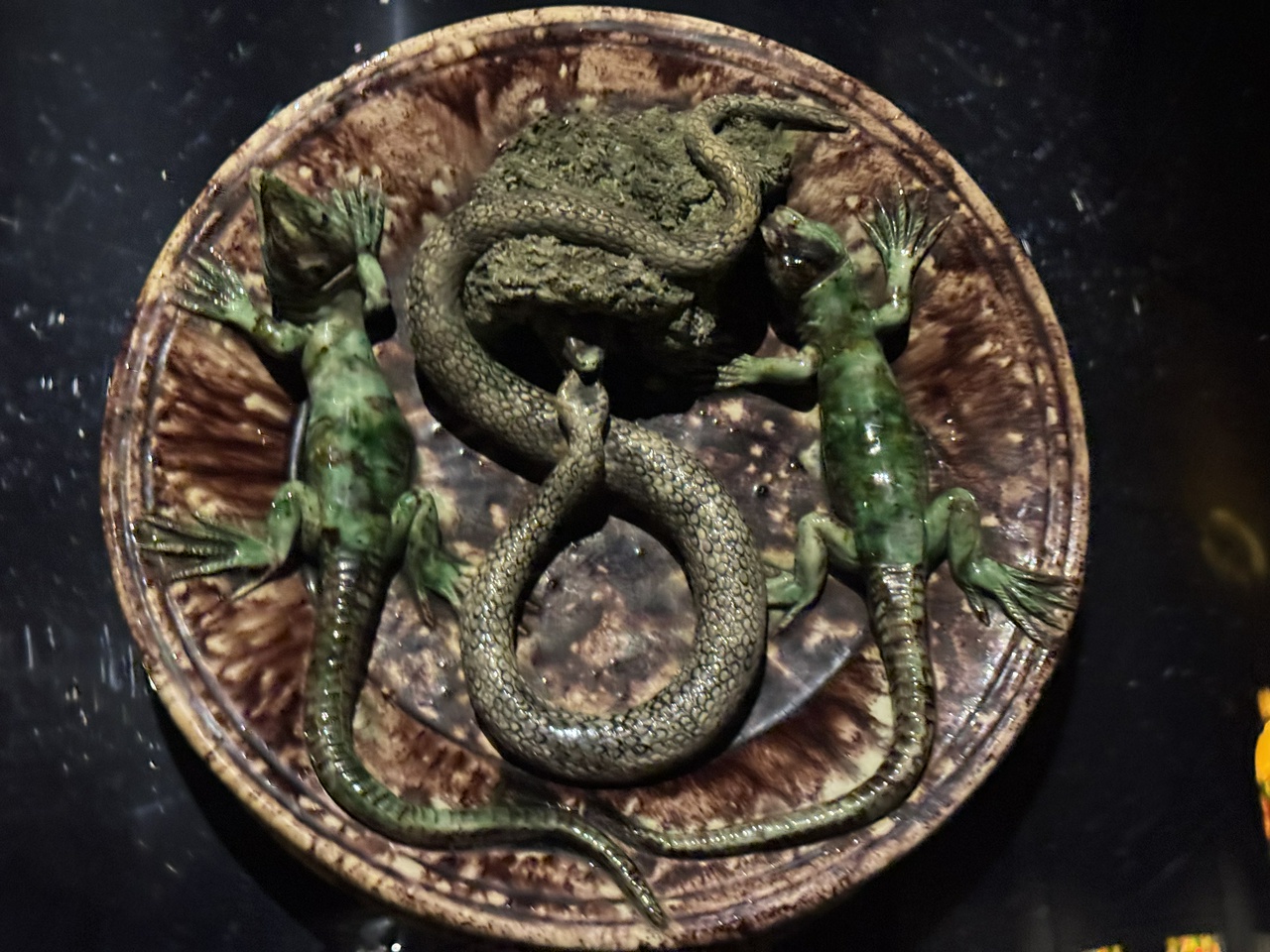 Snakes and lizards
Snakes and lizards
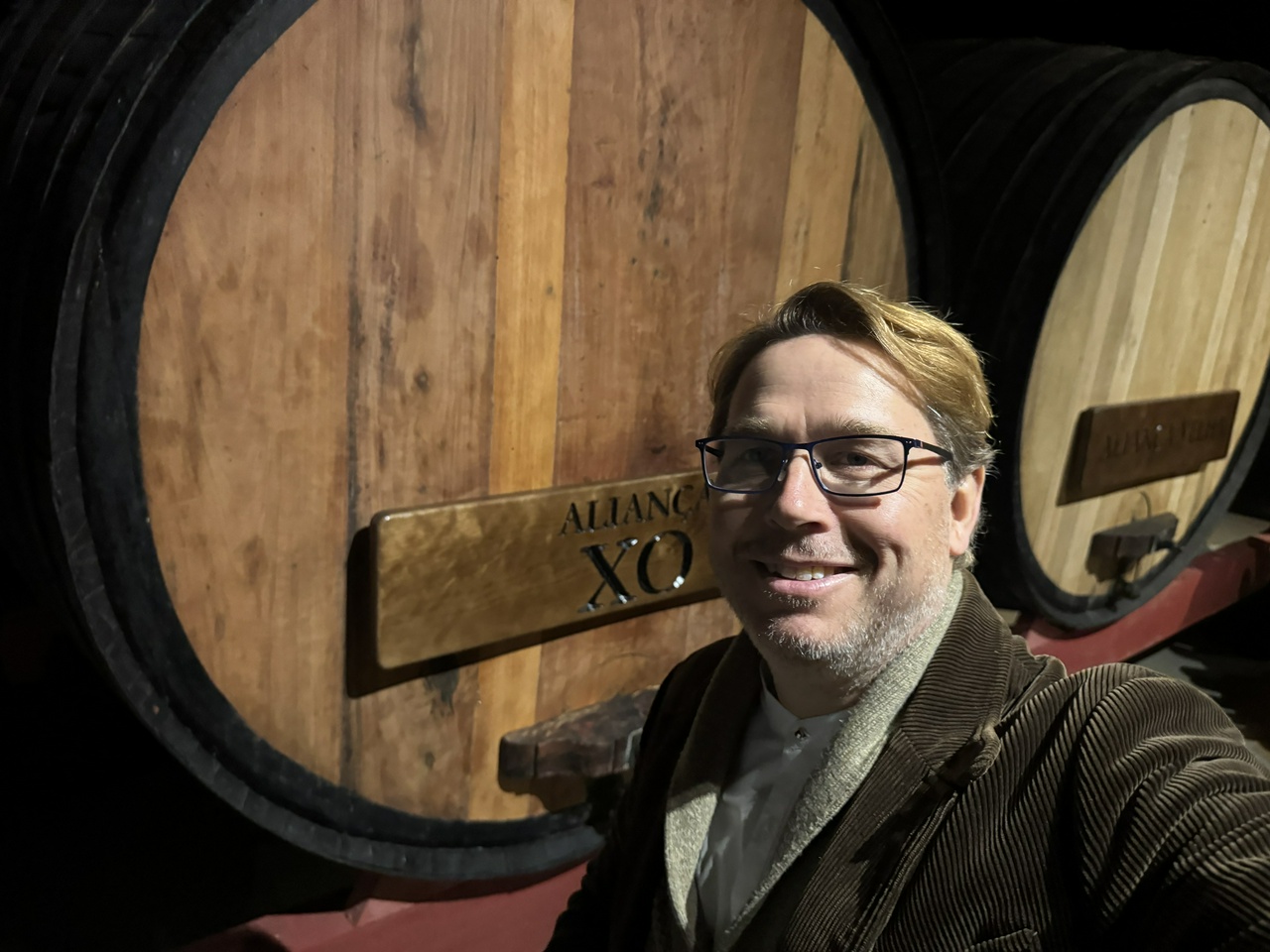 Big barrel
Big barrel
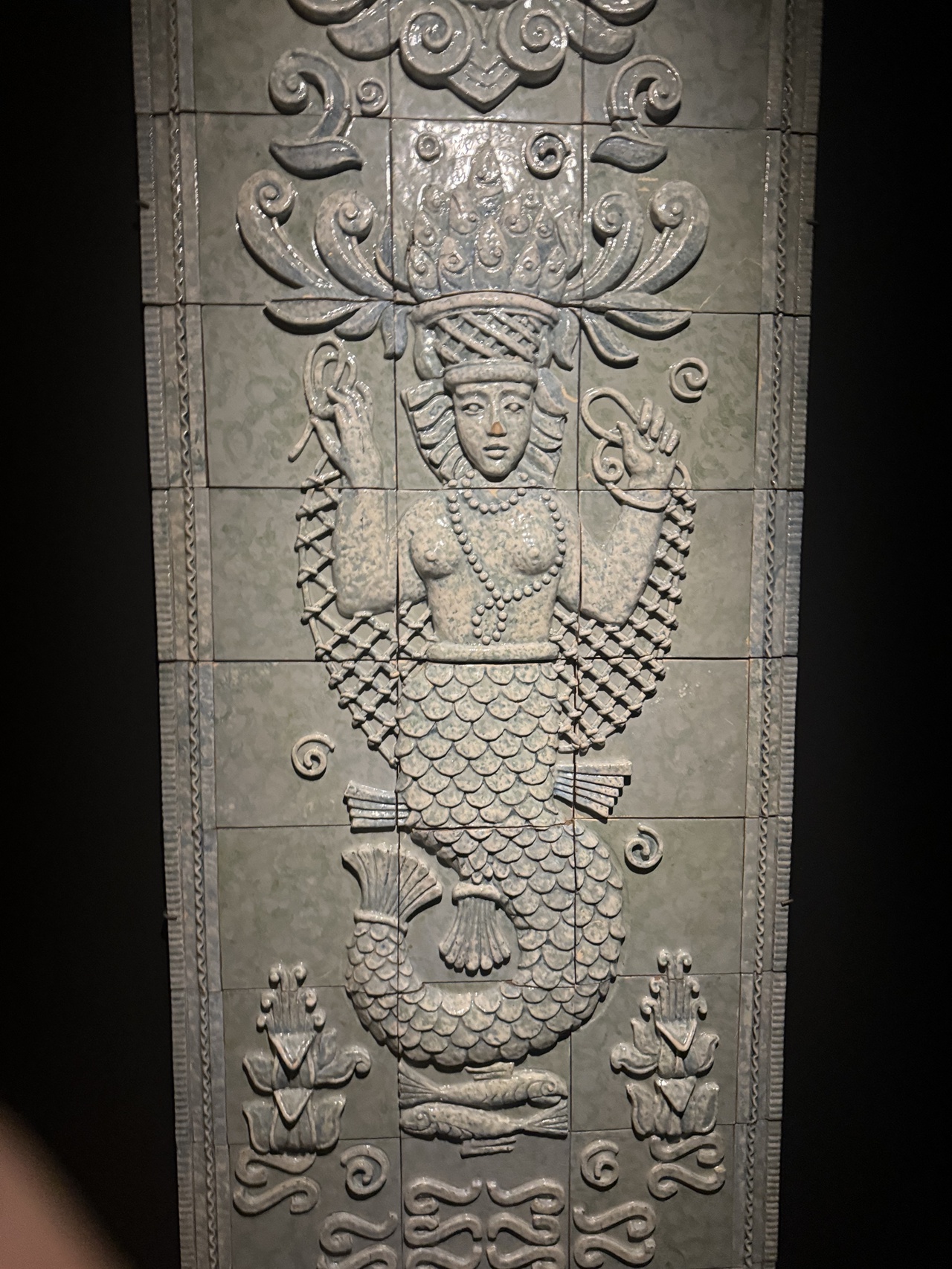 Mermaid
Mermaid
 Tile faced
Tile faced
 Bucolic scene
Bucolic scene
 Africa head
Africa head
 African Chalice
African Chalice
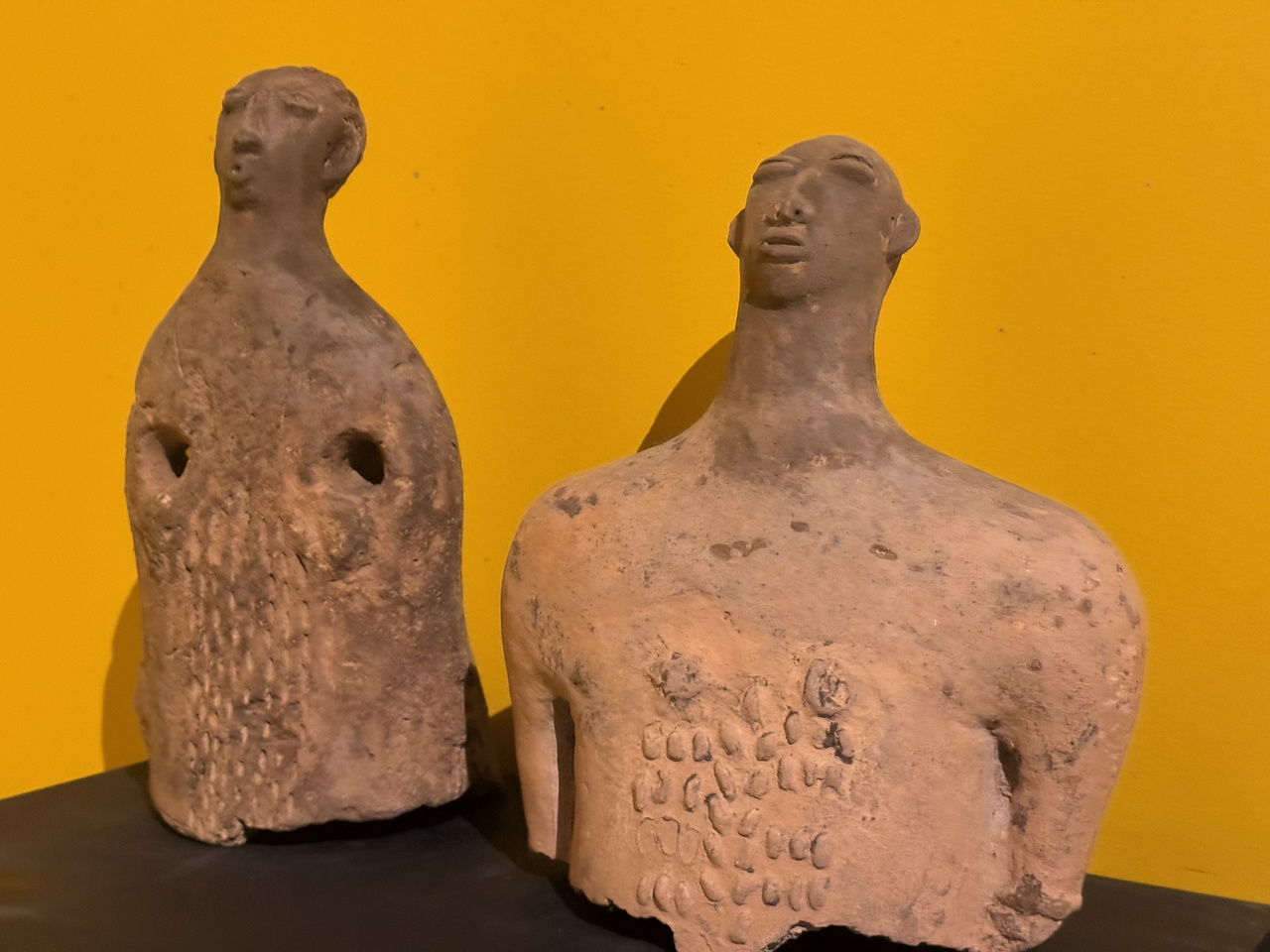 Terracotta heads
Terracotta heads
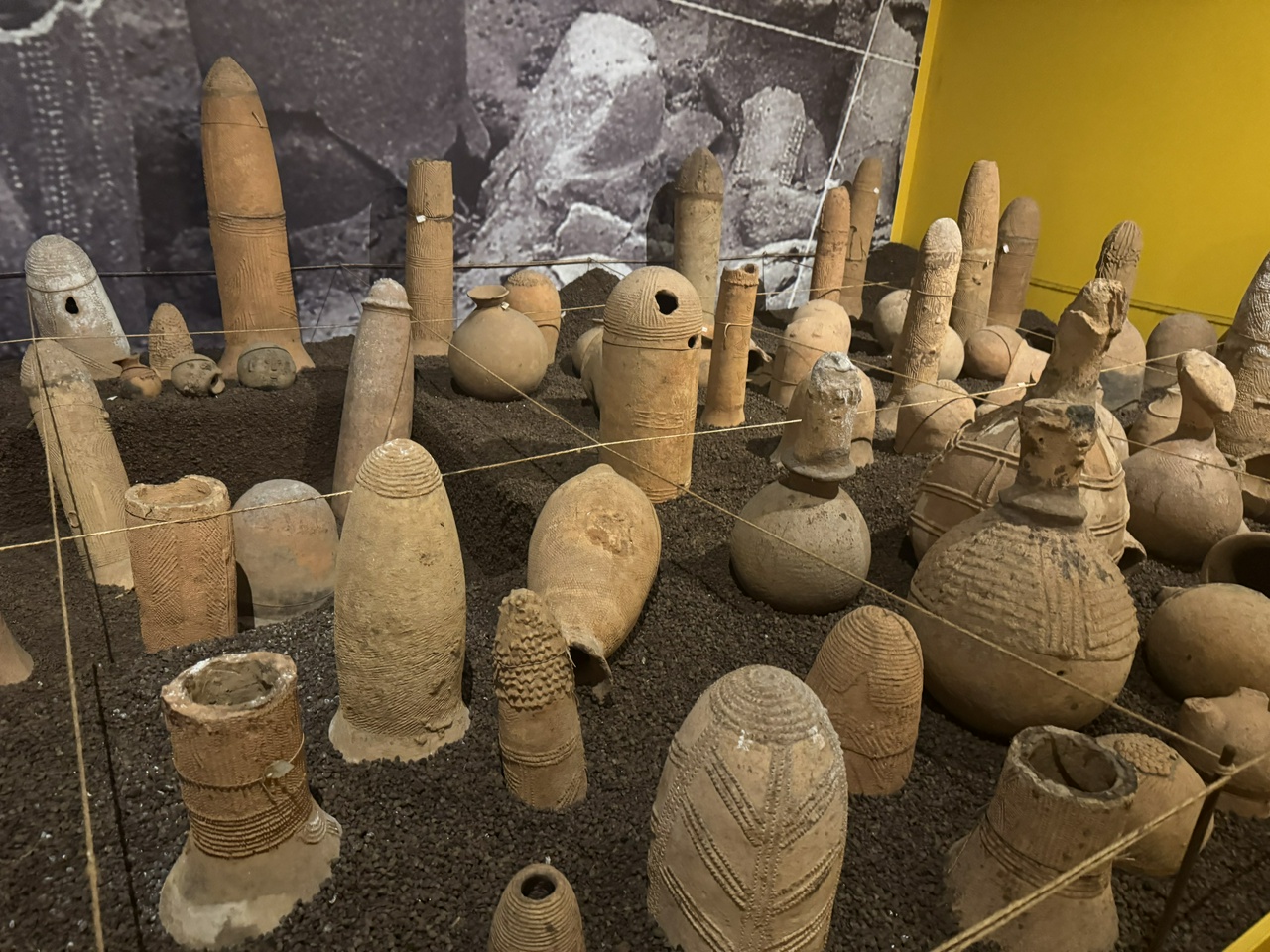 Phallic Cemetery
Phallic Cemetery
 Ivory sculpts
Ivory sculpts
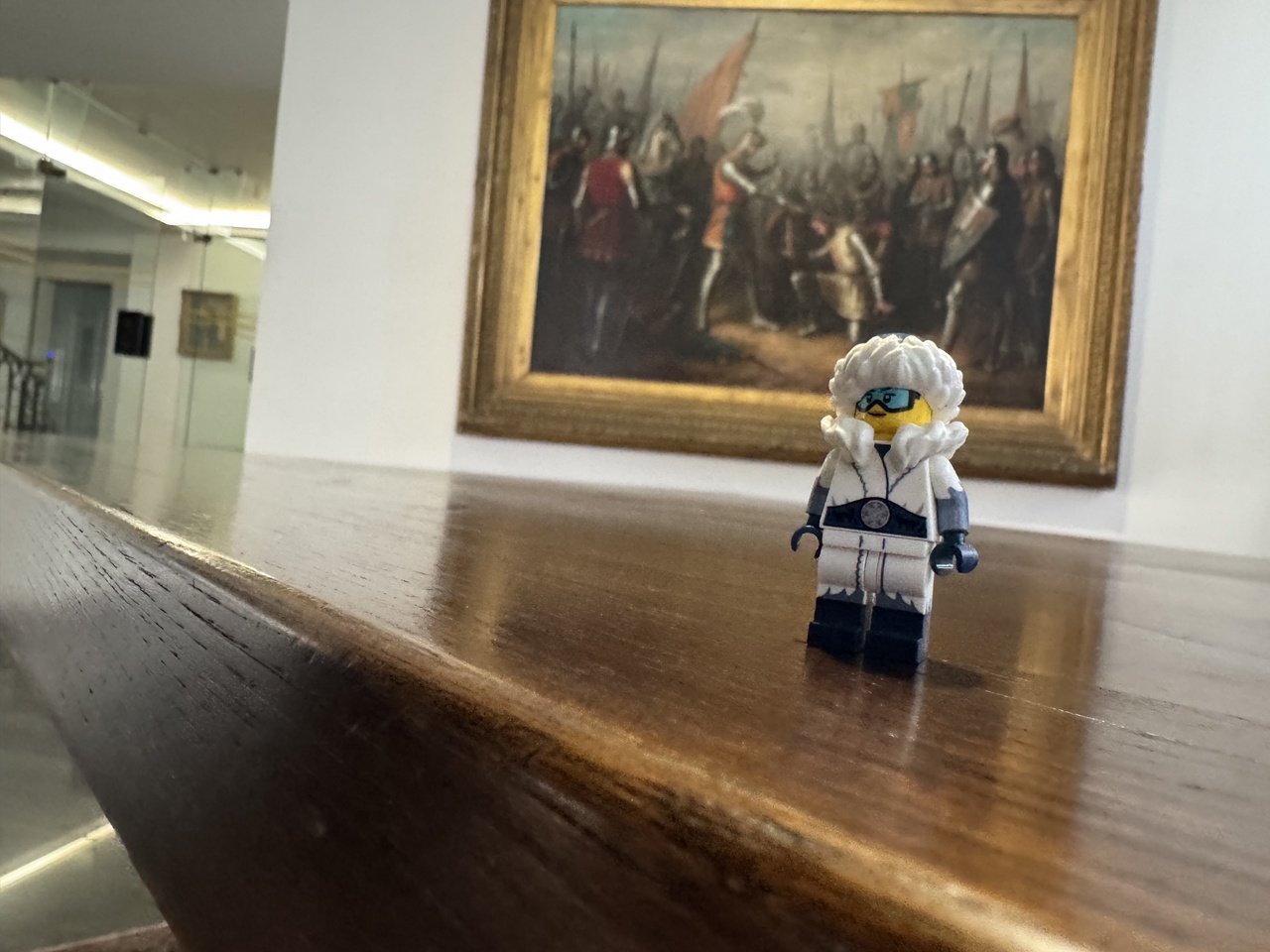 Sherpa-sharona
Sherpa-sharona
 Mc seaside
Mc seaside
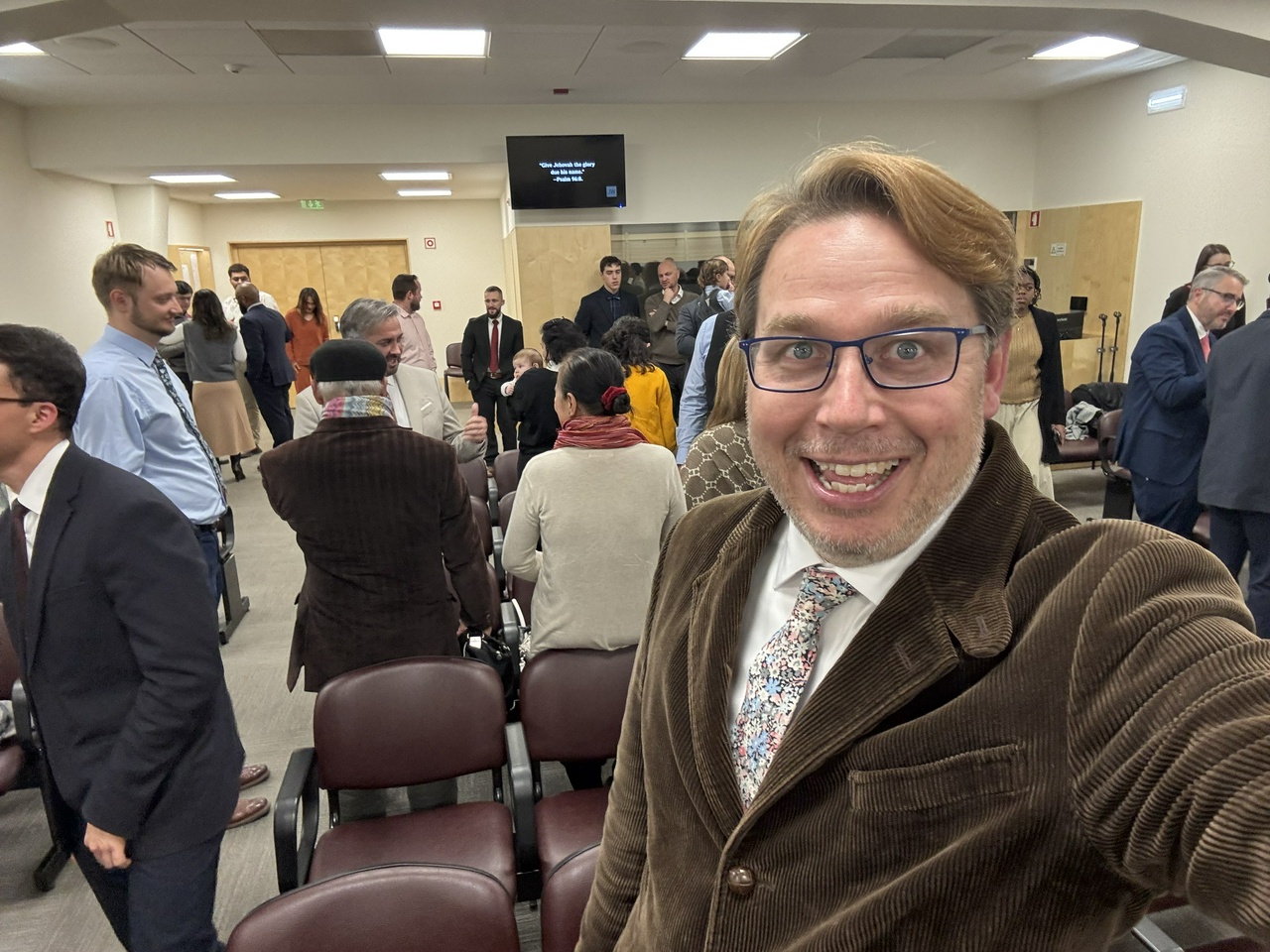 Wild Mike
Wild Mike
 Sharbeer
Sharbeer
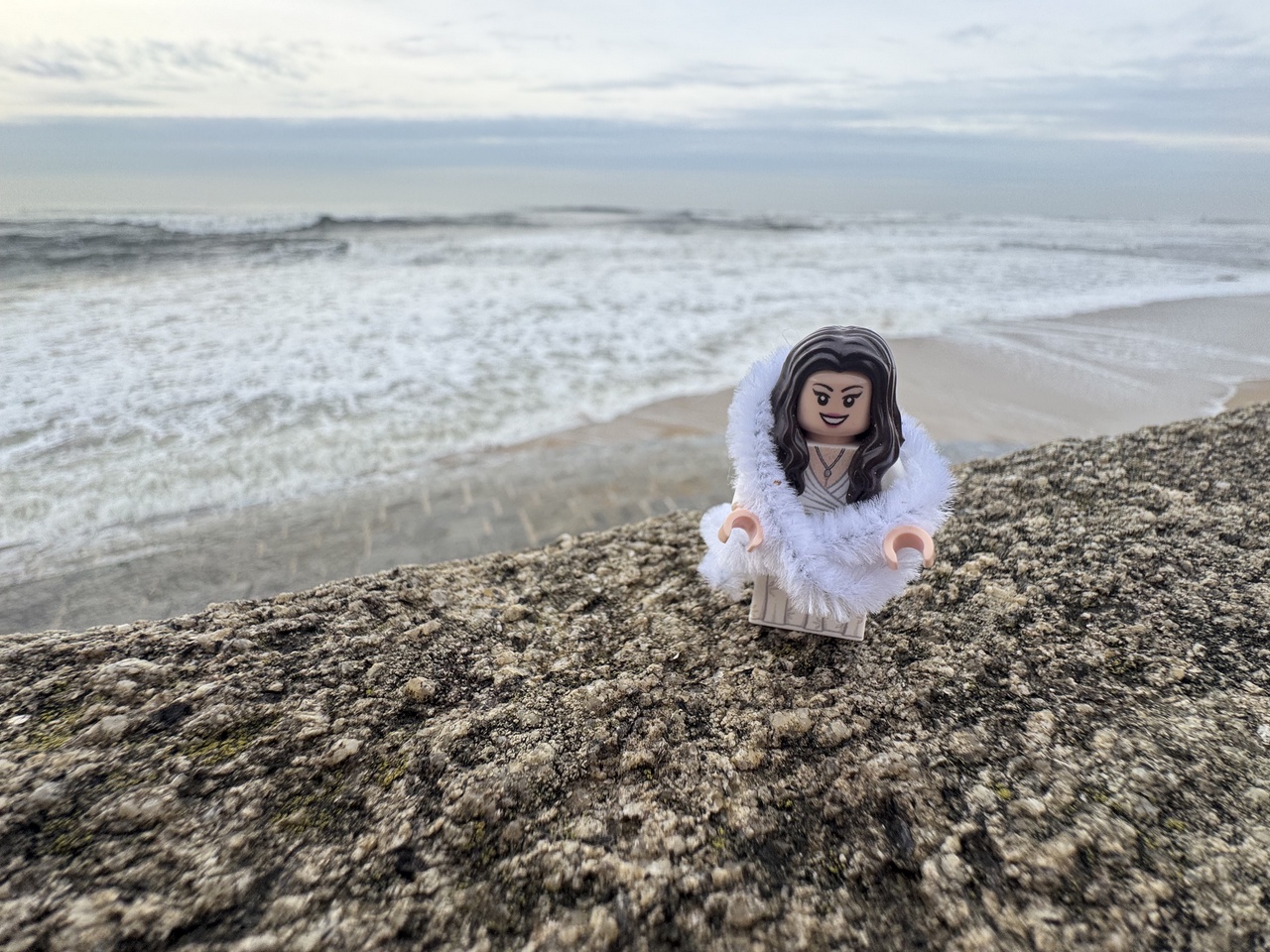 Shar ocean
Shar ocean
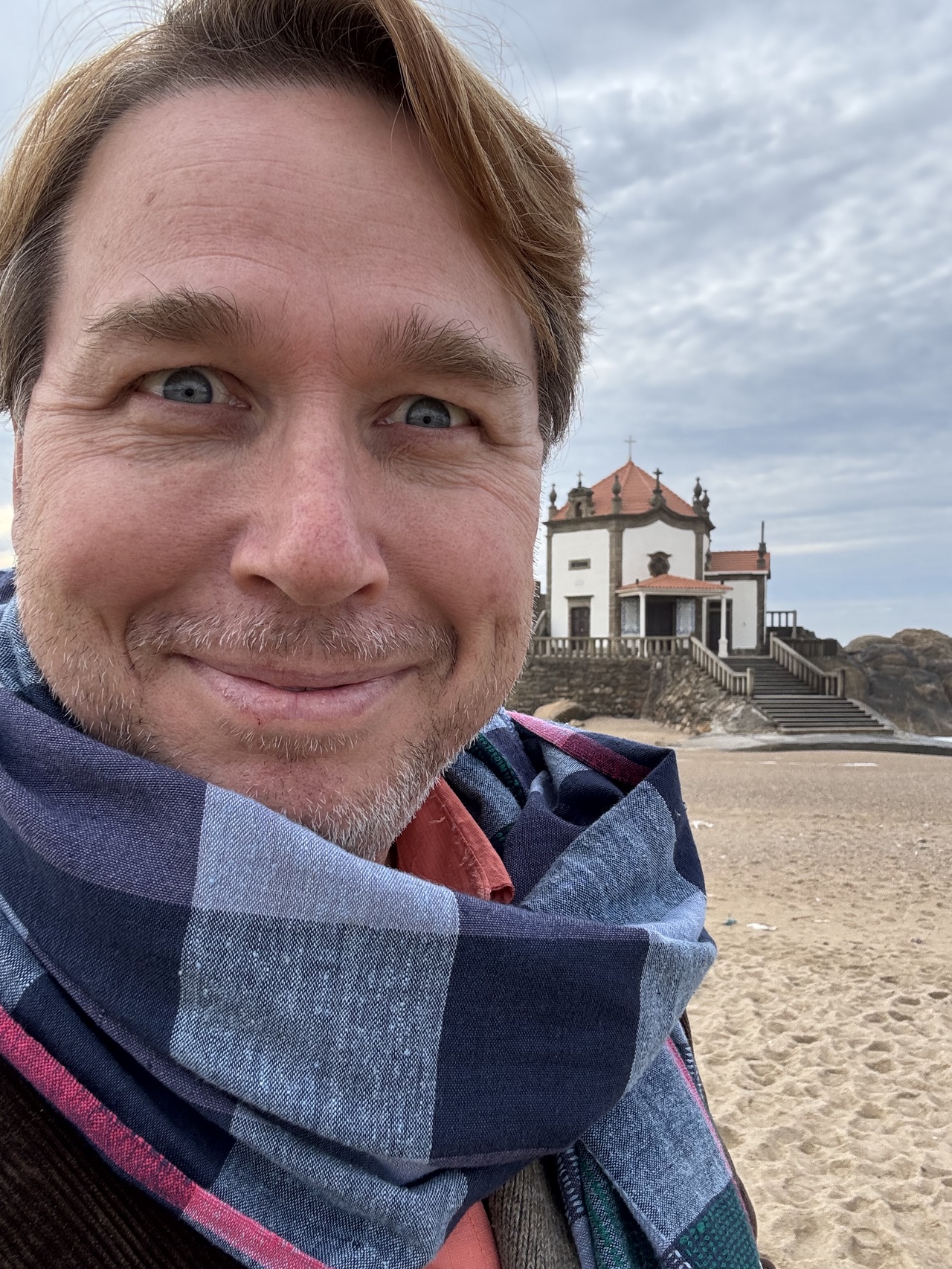 My church rock
My church rock
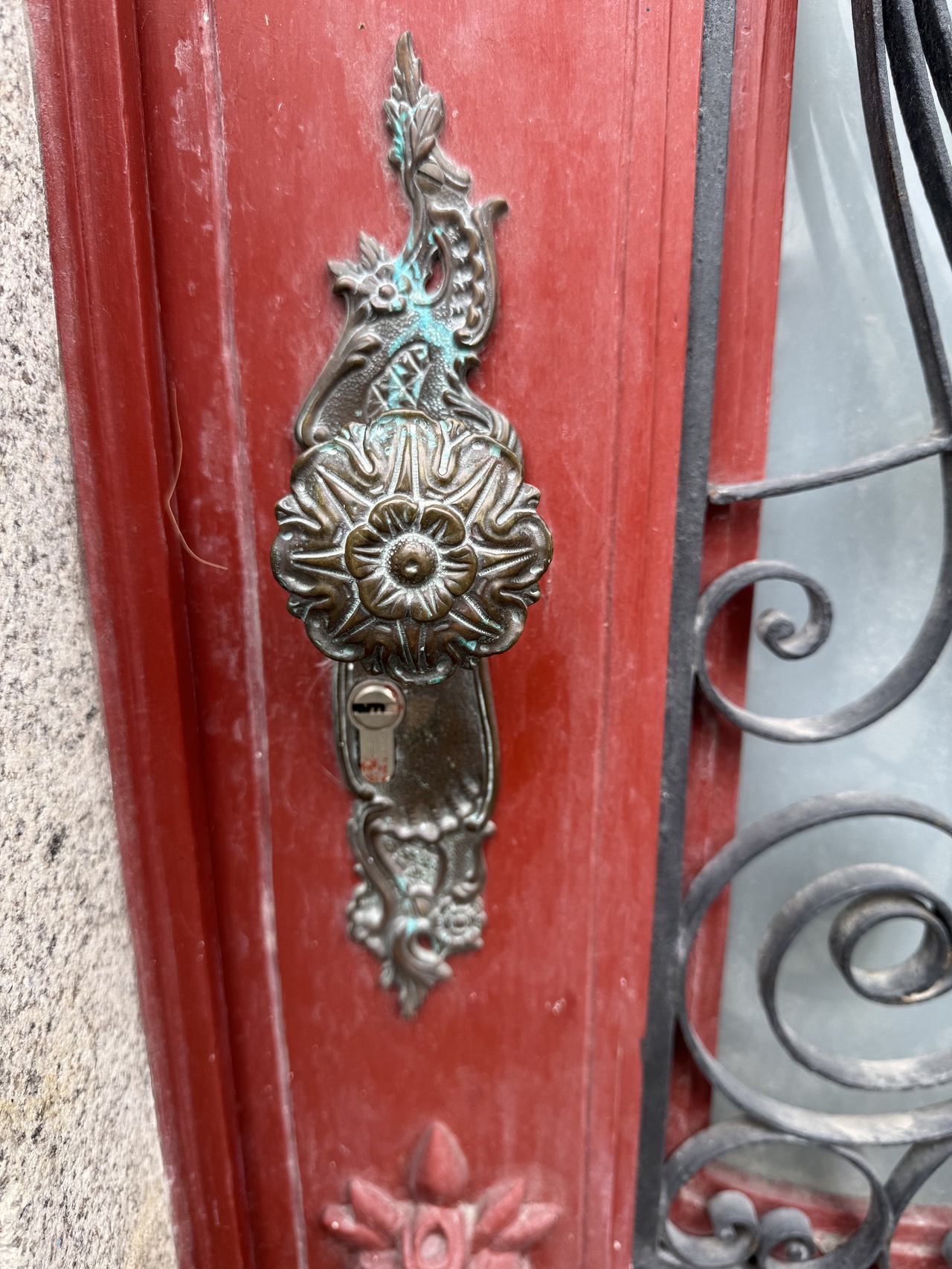 Doorknob
Doorknob
 Hummer
Hummer
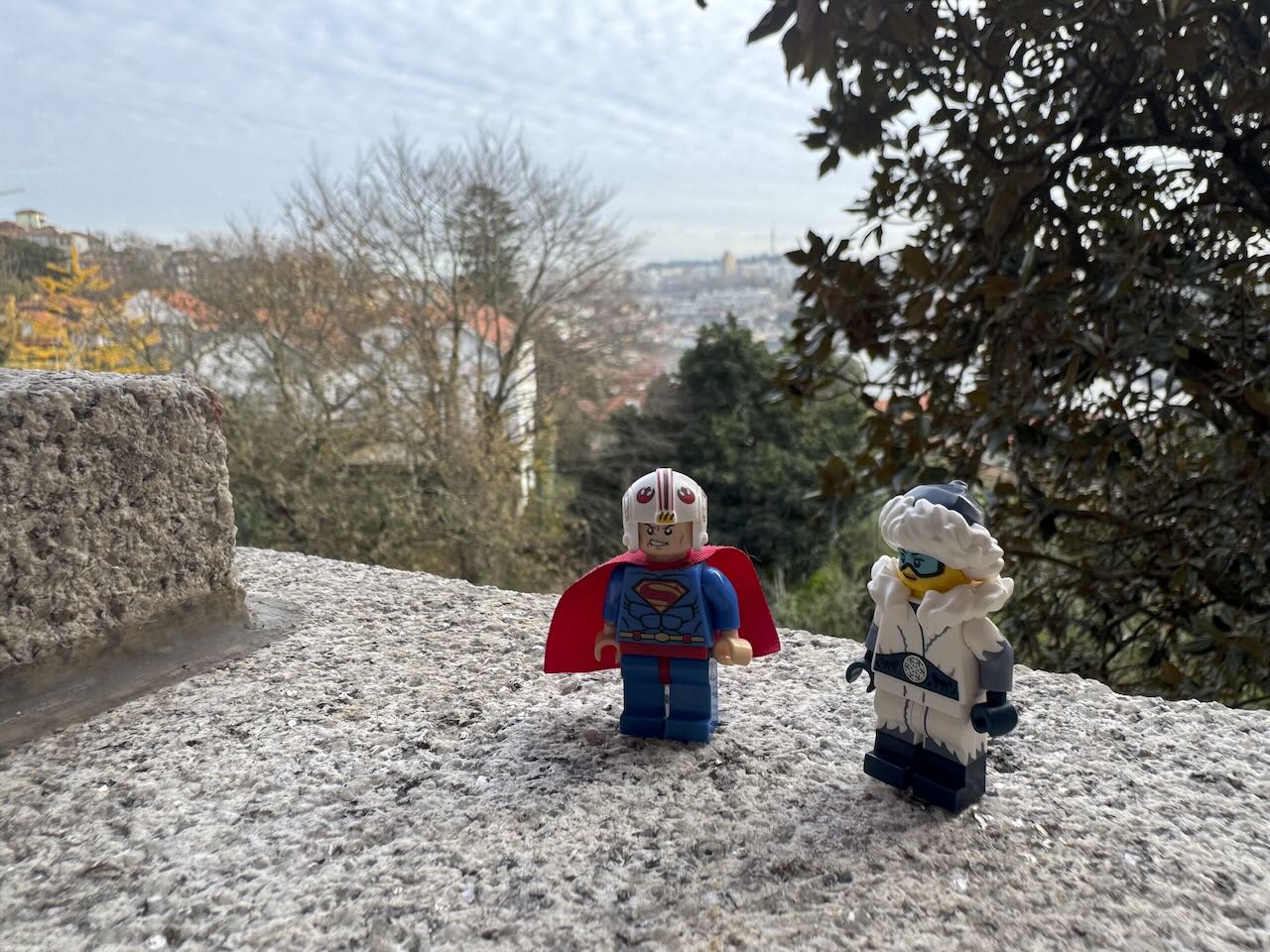 WYST
WYST
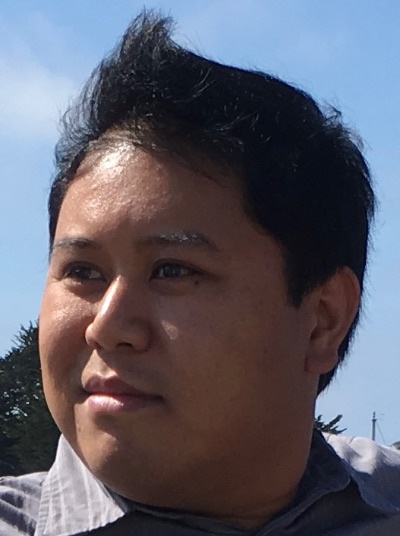 Ernest Ortiz Writes Now
Ernest Ortiz Writes Now